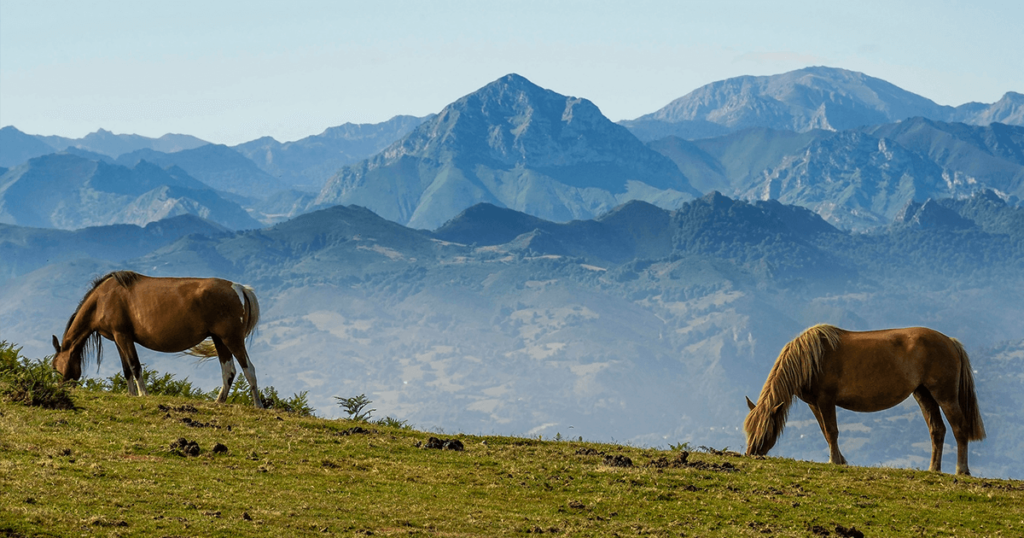
To the east of my home in Gijón are the Picos de Europa, the mountains par excellence of Asturias. They are the most picturesque, both literally and mythically. Holed up in a cave in these mountains in 722, the Visigoth nobleman Pelayo, leading a ragtag bunch of warriors to stop the advancing Moors, received a visitation from the Virgin Mary and with her aid rallied his men to rout the invaders. Moorish histories tell the tale differently. Their version suggests that the Moors couldn’t be bothered to do battle for such a desolate land, full of bears and briars, and turned their backs on the northern wilderness. In Asturias, though, it’s a story of glorious victory against tremendous odds. A grotto fitted out as a shrine to Our Lady of Covadonga is a tourist draw.
Torrecerredo, the highest peak in Asturias, is in the Picos, and so is Naranjo de Bulnes, the most impressive-looking peak and the one climbers tackle. A funicular railway takes you up to the village of Bulnes, and a steep and winding path leads to a refuge at the base of the peak. The Picos de Europa National Park is also in these mountains, as are the Lakes of Covadonga, known simply as Los Lagos.
But the mountains I see the tops of from my yard are the closer Sierra del Sueve, home to a native breed of ponies called asturcones, the site of the Fitu Pass of cycling importance and of Pico Pienzu, highest peak. The mountains of the Sueve are so close to the ocean that it’s possible to drive the highway between the rocks and the water and worry about sliding into the one or crashing into the other. Turn inland to cross the mountains, and from the pass you have a striking view of the Picos in one direction and the ocean in another. I’ve watched the cyclists at the pass and spotted Asturcón ponies in the mountain meadows, I’ve climbed Pico Pienzu, and I’ve marveled at the view. Such richness. Stretch out your arm and you could sweep it all in, the way the winner does at the blackjack table.
Back home I remember primarily not the high, sharp inland peaks but the big chunks of rock near the sea. They appear to have broken loose. When my children were little, the rocks looked to me, driving by on an early morning, as smooth as children’s soft blocks left out all night. When the boys were a few years older, I saw in the rocks their toys in the disarray of abandonment, pushed aside into a pile as the child arose from play and headed out into the larger world. How do they look now when my kids hardly play at all unless it’s video games? These blocky, velvety mountains poised beside the water look like bears on their haunches, not fearsome, but sleepy and questioning, in no hurry at all and not offended, not even much interested, that some would do battle for them while others couldn’t be bothered.

